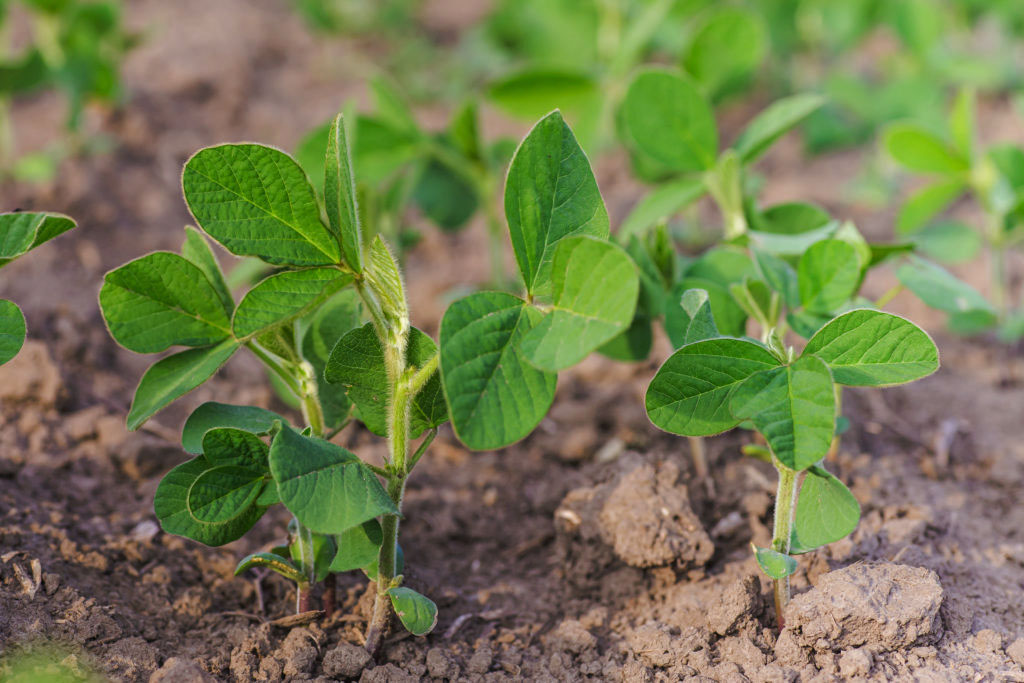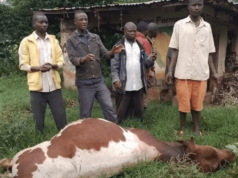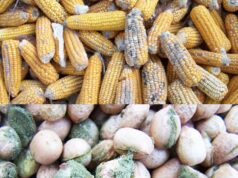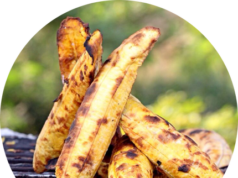By Pauline Akello
Farmers across East Africa are continuously appreciating and engaging in soybean (soya) farming becaause of its ability to improve soil fertility.
This, however, was not the case in 1996 when soybean rust, one of the most devastating soybean diseases in the world, was detected in Uganda, leading to total losses.
As a result, interest in growing soybean fell drastically among farmers.
Subsequently, researchers at Makerere University developed six high yielding–rust-resistant soybean varieties named: Namsoy 4M, Maksoy 1N, 2N, 3N, 4N, and 5N.
These Soybean varieties flower and produce pods four to eight weeks after planting.
The new development has given hope to Ugandan farmers to resume production of the crop.
Among them are Jackline Namono and her colleagues who founded a community-based organization in Gulu to support farmers venturing in this crop.

Working as a team
Namono’s story is linked to a kinship she found in Gulu through the Friends of Children’s Circle (FOCC).
It was officially formed and inducted in 2018 after her course in Public Administration from Gulu University.
After Namono completed school and graduated in 2017, she purposed to continue her community-centered work because it is in line with her calling.
She was intentional about her choice of academic programme, knowing it would front her to work with communities.
Namono had already been undertaking several outreaches and community-building projects in Gulu.
As they started their adventurous enterprise, Namono and her colleagues under their FOCC organisation, planted five acres of soybean which harvest left them smiling from ear-to-ear.
Boosting soybean yield
The team at FOCC applied natural fertilisers obtained from the community.
Organic fertilisers contain nitrogen and phosphorus which are critical nutrients for soybean growth and yield.
These components are good elements for healthy soy root and stem development, and pod formation.
Plating soybean
Land preparation is done during the dry season to give time for the vegetation to dry and rot, and also expose soil-borne pests to the sun.
Namono says the forst weeding is done three weeks after planting, followed by a second weeding three weeks later, just like beans are weeded.
Soybean is ready for harvesting when the pods dry and give a rattling sound. Delay in harvesting may lead to pod shattering and loss of grains.
From her experience, Namono says farmers find so much difficulty harvesting when there is a lot of rain.
“When it was time to harvest, the weather changed and much rain caused a considerable section of our garden to be unharvestable,” she says.

Soybean seeds have varying colours, ranging from yellow, green, brown, to black, depending on the soybean variety planted.
It is one of the most important grain legumes grown in East Africa.
Soy is also used in various food preparations and recipes, especially for weaning babies. One major use is extraction of cooking oil and livestock feed formulation.
Pests and diseases
Pathogens and pests that attack soybean infect all plant parts including roots, shoots, stems leaves, pods, and seeds.
Most commonly, symptoms are observed first on leaves, then sometimes on stems and pods.
Roots are rarely observed for pathogens and pests, though many diseases may occur primarily or at least initially on roots.
Pathogens are caused by a wide range of organisms, including bacteria, fungi and viruses. Pests too, vary widely; from insects to mammals.
Important to note is: the management and control of a disease or pest problem often relies on the proper diagnosis.
Soybean seed health is affected by many factors, including abiotic and biotic stresses.
Plants stressed by too much or too little water or by nutrient imbalances often produce abnormal seeds. Biotic factors including bacteria, fungi and viruses often affect seed health.
Soy can be affected by root diseases, pod and seed diseases, stem diseases, viruses and phytoplasma which are often vectored by insects, including aphids, beetles and leaf hoppers.
Leaf diseases such as cercospora leaf blight, brown spot, bacterial pustule, frog-eye leaf spot, red-leaf blotch and rust witches’ broom also affect soybeans.
Best practices
General principles of good management often help to reduce or alleviate problems related to abiotic and biotic stresses.
Practices like crop rotation, planting healthy and vigorous seeds, and selection of soybean varieties are all important.
Agricultural studies show that soybeans grow better on friable soils which have adequate nitrogen and phosphorus minerals.
Namono says organic farming is their only way. Given the high yield they obtained in the previous season, Namaono recommends going organic.
Soybean supports biodiversity and, in turn, enrich the soil.
Namono says for anyone planning to grow soybean should have a well-prepared field, and open up holes of about 5-6 cm in rows.

She says one must use certified seeds to get high yield.





















